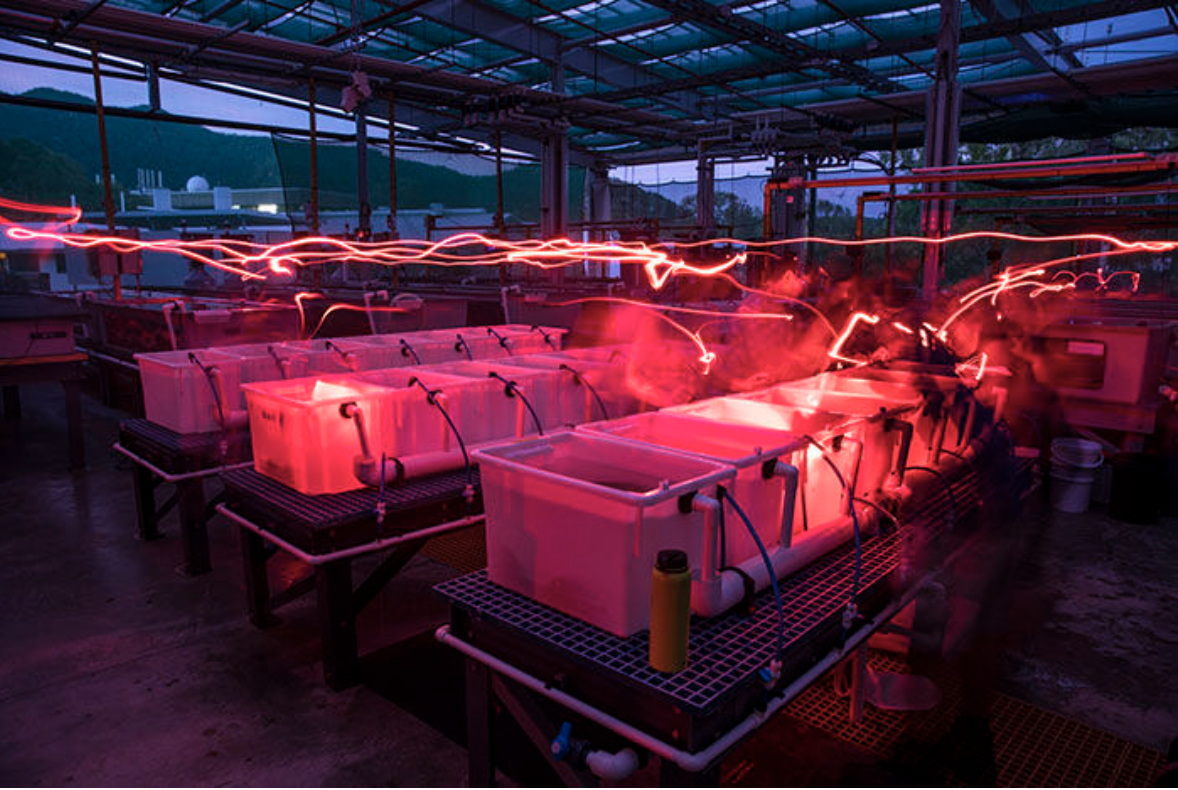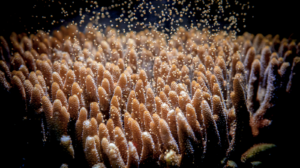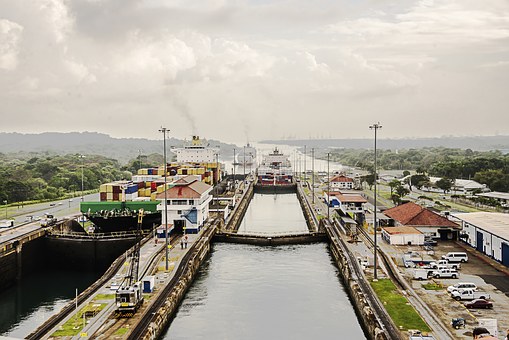Abstract
Coral reef ecosystems have been suffering from the consequences of climate change. Coral bleaching, a result of warming ocean temperatures, has caused a mass die-off of coral reefs around the world, emphasizing the importance of protecting coral reefs to save marine ecosystems and coastal societies. Engineers have been experimenting with CRISPR/Cas9, gene-editing technology, in order to create synthesized super corals that are able to withstand higher ocean temperatures. When engineers successfully implement resilient genes, organisms that live on the outside of coral plant structures will be able to keep the coral fed and enable the coral to feed the vast amount of marine life that depends on them. Due to challenges present within the complex genomes of coral-dwelling organisms, engineers are struggling with large scale applications of the genetically modified spawning of synthesized coral species. However, with rising ocean temperatures posing imminent danger to marine life, this might be the only option engineers have left to save the world’s coral reef ecosystems before the colorful ocean turns into a bleached graveyard.

Figure 1: Bleached coral reef in the Great Barrier Reef. Brett Monroe Garner / Greenpeace via Reuters. [15]
Climate Change vs. Coral
Since 1880, climate change has caused the global temperature to rise by 2 degrees Fahrenheit, the amount of arctic ice to decrease by 13% per decade, and an 8 inch rise in sea levels yearly [1]. Man’s disruption of the natural carbon cycle has caused many adverse effects that are negatively impacting the ocean.
The ocean may cover 70% of the earth, but less than 5% of it is explored. Therefore, the ocean and what lies in its depths remains one of humanity’s greatest mysteries. There are around 230,000 known species in the ocean, but as many as 2 million more are likely to be discovered [2]. The ocean’s incredible biodiversity houses a variety of organisms that can be found in coral reefs, which hold over a third of the world’s marine fish [3].
Coral reefs are the most diverse of all marine ecosystems, but their lives and the countless organisms that rely on them to survive are in danger. The preeminent danger to coral reefs is coral bleaching, which refers to the loss of the colorful, vital organisms that live on the outside of coral plants and help them to survive. Coral systems of the ocean, and specifically that of the Great Barrier Reef off the northeastern coast of Australia, do not have enough time to adapt to changing ocean conditions. As a result, huge sections of the Great Barrier Reef have been pronounced “dead” due to overheated seawater and ocean acidification.
In response, engineers are working on slowing down coral bleaching while addressing ways to stymie its effects, but the complexity of coral reefs’ genetics makes this difficult to manage. While many engineers are attacking coral bleaching at its source by trying to reduce humanity’s addition of greenhouse gases into our environment, other engineers are taking more of a hands-on approach and trying to manipulate coral reefs to sustain higher ocean temperatures. Marine scientists around the world believe that it is too late to solve coral bleaching by attacking climate change and that we need to adapt our coral ecosystems to the changing ocean conditions through genetic manipulation.
A new gene editing tool, CRISPR/Cas9, is currently being used to attempt the creation of synthetic coral plants in order to repopulate the ocean with heat tolerant coral species. Scientists have been targeting super corals from the Great Barrier Reef, which are corals that have the known ability to tolerate and recover from higher ocean temperatures [4]. Scientists are identifying specific heat tolerant genes within super corals in order to attempt to transfer them into new coral species that can re-populate the Great Barrier Reef with healthier and stronger species. Despite many challenges, few options exist in the race to save the world’s coral reefs and CRISPR/Cas9 could be the solution the world is looking for in order to save our precious coral reefs.
Assessing the Problem: Coral Bleaching
Coral bleaching is the term used to describe the loss of the symbiotic algae and photosynthetic pigment layers that lie on the outside of the white, calcium carbonate skeleton of coral structures [5]. Corals get their color from tiny algae that live in their tissues [5]. Symbiodinium, an example of these algae, are microbes that have a symbiotic relationship with the coral plant; they are responsible for supplying the coral plant with food through photosynthesis [6]. However, due to warming ocean temperatures, organisms like symbiodinium get ejected from the coral, leaving the coral plant white and malnourished, as seen in Figure 1 [5]. Coral has a limited temperature range within which it can live, so small rises in ocean temperatures can do a lot of damage [5]. Increased anthropogenic carbon dioxide emissions trap heat in the earth’s atmosphere and, at the same time, deposit carbon dioxide into the world’s oceans, leading to the ejection of coral’s protective layers and organisms. The pace of climate change is too fast to allow the coral to adapt to changing ocean conditions.
The Vital Importance of Coral Reefs
Coral reefs harbor an amount of biodiversity disproportionate to their size, so negative effects abound when they die. When coral reefs become bleached, the coral itself dies and is unable to support the species that depend on them. Fish and invertebrates rely on coral for food and shelter, and the absence of coral causes them to be more susceptible to higher level predators. This results in a decline of species diversity and a drastic change to the food web [9].
Besides their importance to marine ecosystems, coral reefs are also important to coastal human societies, since 450 million people benefit from them by proximity [7]. Degraded coral reefs are not able to afford the same benefits as healthy reefs for local human communities that depend on them, as the reefs serve as shoreline protection to many coastline communities throughout the world [3]. Coral serves as a buffer to storms, waves, and floods, and without coral, high levels of erosion will impact those living by the ocean [8]. Also, fish populations will decrease without protection from coral, causing food supplies to decrease, which can lead to economic problems [8]. Coral reefs are a valuable source of pharmaceutical compounds as well and dead reefs cannot serve as a source for important medical advancements [9]. The destruction of coral reefs is not only detrimental to the lives of marine organisms but also affects human lives.
The Great Barrier Reef: A Magnet for Coral Scientists
A prime example of coral bleaching can be seen in the Great Barrier Reef. It is well studied as the sheer scale of the impact it has suffered has caused it to become a magnet for marine scientists. The Great Barrier Reef is a complex of coral reefs, shoals, and islets in the Pacific Ocean off the northeastern coast of Australia. It is the largest reef complex in the world and extends for more than 1,250 miles [10]. The 2,100 individual reefs of over 300 species of hard coral have been formed over millions of years from the skeletal waste of a mass of living marine organisms [10]. However, from the 1950s to 2017, the reef had an unprecedented die-off where around 50% of the reef died due to coral bleaching [11].
Most of the bleaching occurs in the summer when the temperatures of the ocean reach their maximum [11]. However, even in the most heat stressed areas of the Great Barrier Reef, some coral plants have been able to survive. Scientists have deemed these to be super corals due to their demonstrated ability to withstand higher ocean temperatures [4]. These corals have provided scientists with the opportunity to identify genes that allow these plants to survive hotter temperatures. Scientists and engineers alike can study these genes and attempt to insert them into synthesized corals using genome-editing technologies. These new corals could be the future of coral reef conservation by repopulating the reef ecosystems we have lost.

Figure 2: The National Sea Simulator lab in Townsville Australia [14]
CRISPR/Cas 9: Engineering to Save Coral Reefs
In order to understand why super corals are able to withstand higher ocean temperatures, coral reef research has been primarily based around identifying and tabulating a plant’s genomic complex to better understand the inner workings of the coral plant. The emergence of a genome-editing technology, CRISPR/Cas9, has illuminated gene functions in coral reef structures and has created a new scientific interest in genetically modifying coral species [12]. This technology has become the cheapest and most accurate way to inspect and edit the DNA of any organism [12]. Scientists at the Stanford University School of Medicine successfully used CRIPSR technology to pinpoint specific coral genes in 2018 [13]. This was the first evidence that gene-editing tools can be used to manipulate the genes of coral structures. Coral Geneticist Madeleine Van Oppen runs the National Sea Simulator lab in Townsville Australia (Figure 2) [14]. Using CRISPR technology, Van Oppen was able to pinpoint genes that are more resilient to higher ocean temperatures in 2019 [14]. CRISPR has allowed Van Oppen’s team to modify multiple coral structures by injecting a small portion of plants with specific genes in order to determine whether the genes successfully improve resiliency [14].
What follows after gene identification is the hardest part: genetically inserting these genes to stimulate higher heat tolerance in new super corals. The goal is to take heat tolerant genes and inject them into the DNA of Symbiodinium, and other reef-building organisms, in order to keep the coral plant alive and nourished during high stress situations. Similar to Van Oppen, Rachel Levin, a molecular biologist at the University of New South Wales, has been attempting to use CRISPR technology to cut and paste heat tolerating genes into the Symbiodinium’s genome to create highly expressive resiliency to increased ocean temperatures [6]. Levin and a group of engineers have yet to prove this project’s efficacy, but the implications that this has on future coral survivability cannot go unnoticed. Once newly synthesized super corals with specific genes known to have higher heat tolerance are developed, all that’s left is the repopulation of dead reef ecosystems with the eggs and sperm of super corals. Since coral spawn sexual cells only once a year, as seen in Figure 3, it will take time to not only successfully transfer genes into newly synthesized coral plants, but also to apply this revolutionary achievement to an area of hundreds of miles [6]. One single super coral can create more exponentially from the release of hundreds of eggs which become the basis for new plants once they settle throughout the ocean.

Figure 3: Coral spawning releasing sexual cells of sperm and eggs. The cells from newly synthesized corals can create the coral of the future. Mikaela Nordborg/Australian Institute of Marine Science [14]
Challenges, Goals, and Future Implications of Coral Manipulation
Although there has been success in identifying resilient genes, transferring these genes into new corals to replenish all of the dead coral has not proven to be successful due to coral’s complex genome. Currently, engineers are doing their best to use CRISPR/Cas9 technology to cut and paste genes into existing organisms; however, there are many challenges to overcome when working with an organism’s genetics. Heat tolerant genes need to be implemented in the Symbiodinium organisms that will keep the coral alive and functional, but the Symbiodinium has an incredibly complex genome. Symbiodinium’s genome is three orders of magnitude larger than most streamlined symbiotic organisms. In fact, the human genome is only three times as large as the genome of Symbiodinium [6]. Scientists must decode most of the coral genome using CRISPR/Cas9 in order to know where to insert the targeted genes [6]. This process is available and ongoing, but the timetable is not yet known. As said by Dustin Kemp, professor of biology at the University of Alabama, “Rebuilding reefs that have taken thousands of years to form is going to be a very daunting task” [6].
Coral reefs may be incredibly complicated structures, but their significance to the ocean and human life makes understanding them a priority. Their delicacy and incredibly complex structures have caused resistance to direct intervention. Many scientists are concerned that genetically re-engineering coral reefs may be going too far. However, a prior hands-off approach is being questioned as scientists are running out of time in light of increasing effects of climate change.. The work of genetic manipulation isin its very early stages, but in lieu of many alternative options, scientists like Van Oppen and Levin are not looking back. The chance our world’s coral reefs have to survive is dwindling; engineers are innovating to save marine life and CRISPR technology could be the solution.
Sources
[1] H. Shaftel, “Global Climate Change,” NASA, Jun. 2, 2014. [Online]. Available: https://climate.nasa.gov/. [Accessed: Feb. 2, 2020].
[2] A. Doyle, “There are 228,450 known species in the ocean – and as many as 2 million more that remain a total mystery,” Business Insider, 17-Mar-2015. [Online]. Available: https://www.businessinsider.com/r-oceans-yield-1500-new-creatures-many-others-lurk-unknown-2015-3. [Accessed: Feb. 2, 2020].
[3] Queensland Museum, “Importance of Coral Reefs,” Biodiscovery and the Great Barrier Reef, Jul. 8, 2009. [Online]. Available: https://www.qm.qld.gov.au/microsites/biodiscovery/05human-impact/importance-of-coral-reefs.html. [Accessed: Feb. 1, 2020].
[4] Aquarium of the Pacific, “Super Corals,” Aquarium of the Pacific, 2018. [Online]. Available: https://www.aquariumofpacific.org/conservation/super_corals.
[5] G. Heldmaier, M. Van Oppen, J. M. Lough, Coral Bleaching Patterns, Processes, Causes and Consequences. Berlin: Springer, 2009. [E-book] Available: Springer e-book.
[6] K. Frischkorn, “A Blueprint for Genetically Engineering a Super Coral,” Smithsonian Magazine, Aug. 3, 2017. [Online]. Available: https://www.smithsonianmag.com/science-nature/blueprint-engineering-super-coral-180964309/. [Accessed: Jan. 26, 2020].
[7] J. Pandolfi, S. Connolly, D. Marshall, A. Cohen, “Projecting Coral Reef Futures Under Global Warming and Ocean Acidification,” Science (New York, N.Y.), Jul. 22, 2011. [Online]. Available: https://www.ncbi.nlm.nih.gov/pubmed/21778392. [Accessed: Feb. 2, 2020].
[8] NOAA, “How do coral reefs protect lives and property?” National Oceanic and Atmospheric Administration, Nov. 15, 2019. [Online]. Available: https://oceanservice.noaa.gov/facts/coral_protect.html. [Accessed: Feb. 2, 2020].
[9] Reef Resilience Network, “Bleaching Impacts,” The Nature Conservancy, 2020. [Online]. Available: https://reefresilience.org/stressors/bleaching/bleaching-impacts/. [Accessed: Feb. 2, 2020].
[10] The Editors of Encyclopaedia Britannica, “Great Barrier Reef,” Encyclopaedia Britannica, Feb. 15, 2019. [Online]. Available: https://www.britannica.com/place/Great-Barrier-Reef. [Accessed: Jan. 26, 2020].
[11] B. Clark, “Corals Are Dying on the Great Barrier Reef,” National Geographic Society, Mar. 22, 2016. [Online]. Available: https://www.nationalgeographic.com/news/2016/03/160321-coral-bleaching-great-barrier-reef-climate-change/. [Accessed: Feb. 2, 2020].
[12] P. A. Cleves, M. E. Strader, L. K. Bay, J. R. Pringle, and M. V. Matz, “CRISPR/Cas9-mediated genome editing in a reef-building coral,” Proceedings of the National Academy of Sciences of the United States of America, May. 15, 2018. [Online]. Available: https://www.pnas.org/content/115/20/5235. [Accessed: Jan. 26, 2020].
[13] H. Armitage, “CRISPR used to genetically edit coral,” Standford Medicine, Apr. 23, 2018. [Online]. Available: https://med.stanford.edu/news/all-news/2018/04/crispr-used-to-genetically-edit-coral.html. [Accessed: Feb 1, 2020].
[14] W. Cornwall, “Researchers embrace a radical idea: engineering coral to cope with climate change,” American Association for the Advancement of Science, Mar. 21, 2019. [Online]. Available: https://www.sciencemag.org/news/2019/03/researchers-embrace-radical-idea-engineering-coral-cope-climate-change. [Accessed: Jan. 26, 2020].
[15] E. Macguire, “Great Barrier Reef Devastated by ‘Severe’ Coral Bleacing: Study,” NBC News, Apr. 10, 2017. [Online]. Available: https://www.nbcnews.com/news/world/great-barrier-reef-devastated-severe-coral-bleaching-study-n744521. [Accessed: Feb 1, 2020].




